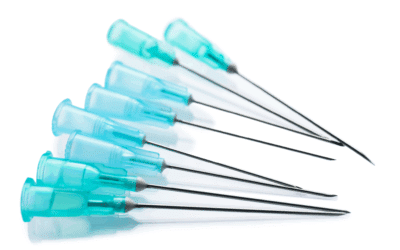Here at Novera, we’re seeing an influx of patients reporting increased headaches and migraines long after being diagnosed with COVID-19. While some of these patients have a history of head pain, many are experiencing a new onset of symptoms. Through this blog post, our goal is to explore why that may be the case and reassure you that if this is your experience, you’re not alone and there is a path to relief.
Headaches are one of the most common symptoms of COVID-19, with about 70% of people who have contracted the virus reporting ongoing tension and headaches as side effects. Headaches are even more prevalent in long COVID or post-COVID syndrome, which involves a variety of new, returning, or ongoing symptoms that people experience more than four weeks after their initial COVID-19 infection. According to the CDC, roughly 7.5% of adults are experiencing symptoms three to five months after being diagnosed with COVID-19. Apart from headaches, other symptoms of long COVID may include things like brain fog, dizziness, changes in smell or taste, depression, anxiety, GI problems, and pins and needles sensation.
The Journal of Headache and Pain reports headaches as the fifth most common symptom for people experiencing long COVID, and this falls in line after fatigue, difficulty breathing, muscle pain, and coughing. Now you may have already experienced headaches or migraines before having COVID, but afterward, you may have noticed that the intensity or frequency increased. It’s also been commonly reported that people without a history of headaches or migraines have noticed a new onset of these symptoms, whether it be sporadic headaches or a more chronic, constant kind of pain. Oftentimes, it’s described as being a dull, achy pain that you feel on both sides of the head.
So – what brings on this headache and why does it continue to persist, even after the rest of your symptoms have resolved? There are a lot of different factors that play a role in this, from localized dysfunction to systemic inflammation. We need to first understand how the body interacts with inflammation and how it impacts the body’s threshold to handle pain. Everyone has a different threshold, but let’s dive deeper into what that means. As a definition, a threshold is a point at which the body can no longer utilize a compensation mechanism to function without pain (or multiple mechanisms). It’s safe to assume that we all have underlying tension within the tissues of our body. How often have you heard of someone saying that they hold their stress in their neck and shoulders? When there is tension in this region, this could become a potential problem that sends pain to the head. Not everyone will experience pain from this, however, as long as their threshold is higher than the stress of the tension.
With that said, just because someone is pain-free doesn’t mean that there isn’t a reason for there to be pain in the future or that their body is moving perfectly. For example, maybe on Monday and Tuesday, you went about your day as normal without issues. Maybe you went to work, took the dog for a walk, and helped your kids with their homework. On Wednesday, you decide to go to a yoga class and find tight areas throughout your body when you move into positions that feel uncomfortable or hard to hold. That’s when you might notice that your body isn’t functioning to its best ability and you’ve been compensating throughout your day to not experience discomfort.
When it comes to post-COVID headaches, it’s safe to assume that there was some sort of underlying problem of tension or dysfunction there before they got COVID, but without pain. This can be caused by stress, work, trauma, or even just gravity weighing us down. If we don’t combat these stressors daily, tension can build. With that said, however, the goal isn’t perfection but just the ability to maintain your ideal level of activity and function without pain. When it comes to looking at an individual’s threshold, we need to avoid only looking at the local area of tension. We also need to take into account systemic inflammation, which can have a dramatic impact on your body’s ability to deal with tension.
For example, sugar (or glucose) is highly inflammatory. Because of this, excess amounts of it in the body can be a headache and migraine trigger for a lot of people. Due to the inflammatory response to sugar, your threshold drops. In this case, the sugar isn’t impacting a local tension problem but rather influencing the system as a whole. When your threshold drops below the level of tension or the level of tension is above the threshold, that’s when you experience a headache or migraine. So how does all of this relate to COVID-19?
When you’re sick, you’re probably more sedentary and are sitting and laying down a lot more than usual. We know that lack of movement can be irritating to the neck and shoulders, especially if you’re in positions that add stress (i.e. slumped into the couch). Again, we’re assuming there was already some sort of tension there. On top of that, when you cough, you’re using all of these extra neck and expiratory muscles to complete that cough. This just increases the amount of tension through the shoulders and neck, building upon what was already there.
Looking at the body as a whole, you have a natural inflammatory response that occurs when you get sick. Even after your initial period of illness ends, our bodies continue to deal with a low level of inflammation. This lingering inflammation continues to drop your body’s threshold to deal with problems elsewhere. How do we tackle all of this? The first step is reducing tension in the neck and shoulders. This allows us to address sources of pain. Regardless of the amount of inflammation in the body, if your neck has no reason to send a pain signal, then you won’t have a headache or migraine.
When it comes to addressing systemic inflammation, we provide local resources to our patients to seek out functional medicine doctors that will look at things like diet, lifestyle, and even supplements to manage inflammation. If you are experiencing long COVID headaches and migraines, it’s important to find a provider that will solve the root of the problem instead of providing a bandaid in order to get long-term relief. The best way out of pain is not by taking medication but by addressing tension in the neck and shoulders while reducing systemic inflammation.
If you or someone you know is experiencing the aftereffects of COVID and are struggling with head and neck pain, contact our clinic today to schedule a visit with one of our skilled clinicians. We understand how debilitating these conditions can be and aim to address the root of the issue with a holistic approach so you no longer have to put your life on hold because of headaches and migraines.




